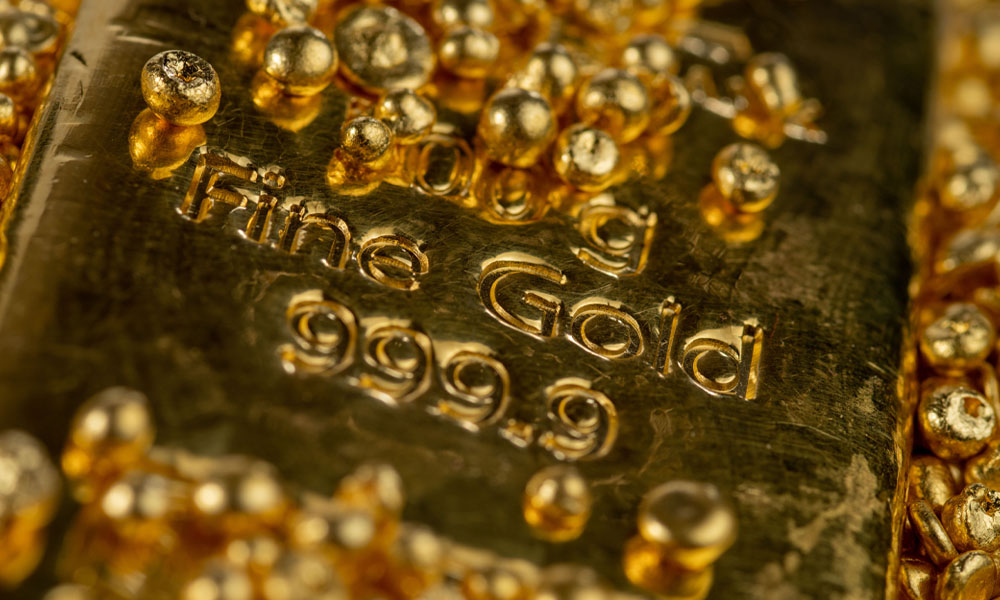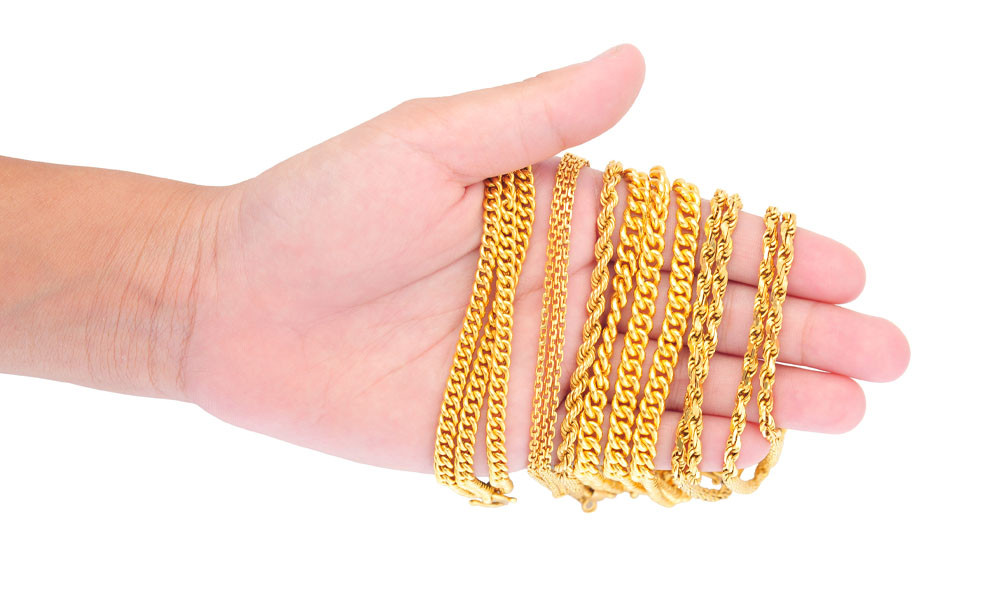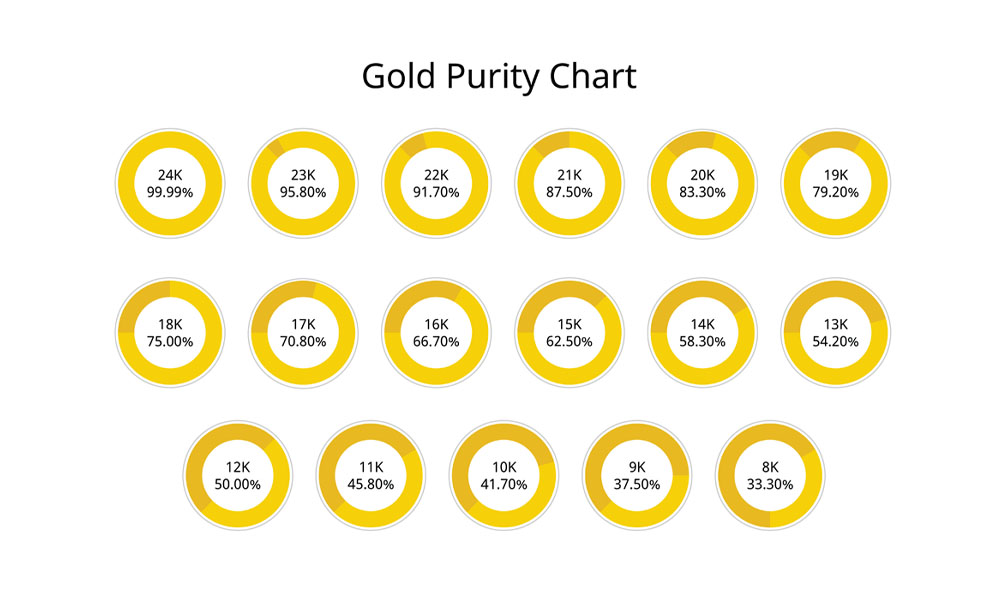Gold has been cherished for millennia, symbolizing wealth, luxury, and timeless beauty. You may have encountered terms like 24k, 22k, and 18k gold when shopping for gold jewelry or investment pieces. But what do these labels mean, and how do they affect the value of the gold you're buying? Today, we'll explore the differences between these gold purities to help you make an informed decision.
Understanding Karats: Measuring Gold Purity
That "k" is short for the term "karat", which refers to the purity of gold. This is not to be confused with "carat," which measures the weight of gemstones. Pure gold is designated as 24 karats, meaning all 24 out of 24 parts are gold without any alloyed metals. However, pure gold is quite soft and malleable, which isn't ideal for most practical jewelry applications. To enhance its overall durability, gold is often mixed with other metals like copper and silver.
Here's how the karat system breaks down:
- 24k Gold: Contains 99.9% pure gold.
- 22k Gold: Contains 91.6% pure gold.
- 18k Gold: Contains 75% pure gold.
Each type has unique characteristics that make it suitable for different purposes.

24k Gold: The Purest Form
Properties and Uses
24k gold is the purest form available on the market, boasting a bright, vibrant yellow color that is highly sought after. Due to its softness, it's not typically used for standard jewelry pieces that are subject to daily wear and tear. Instead, 24k gold is commonly used for investment purposes like gold bars and coins, traditional ornaments in countries such as China and India during festivals and weddings, and in electronics and medical devices because of its excellent conductivity and resistance to tarnish.
Advantages and Disadvantages
The primary advantage of 24k gold is its high purity and intrinsic value. It's hypoallergenic and has a rich, lustrous color that many find appealing. However, its softness makes it prone to scratching or deforming, which isn't ideal for intricate jewelry designs. Additionally, it's more expensive due to its higher gold content.

22k Gold: A Blend of Purity and Durability
Properties and Uses
Comprising 91.6% gold and 8.4% alloyed metals, 22k gold balances purity and durability. The small addition of base metals provides a slightly more durable surface than the 24k form while retaining a rich golden hue. 22k gold is prevalent in regions where gold jewelry serves both as adornment and investment, such as India and the Middle East. It's commonly used for wedding jewelry, heirloom pieces, and sovereign gold coins.
Advantages and Disadvantages
22k gold offers high purity with added strength, maintaining a rich gold color suitable for traditional jewelry. However, it remains relatively soft compared to lower-karat gold and isn't ideal for intricate or heavily used jewelry.

18k Gold: A Wearable Investment
Properties and Uses
18k gold consists of 75% gold and 25% alloyed metals, offering a good balance between purity and durability. The added metals can influence the color, resulting in variations like white gold or rose gold. Widely used in fine jewelry, 18k gold is popular for engagement rings, wedding bands, earrings, necklaces, and bracelets, especially in designer and luxury pieces like Rolex watches.
Advantages and Disadvantages
The main advantages of 18k gold are its increased durability and suitability for daily wear. It's more resistant to scratches and can offer various color options due to the different alloys used. On the downside, it's less pure than 22k and 24k gold and, in certain instances, may cause allergic reactions on the skin of sensitive individuals because of the alloyed metals. It also has a slightly lower intrinsic value per gram compared to higher-karat gold.

Comparing the Three Types
When comparing 24k, 22k, and 18k gold, several aspects come into play:
- Purity: 24k gold is 99.9% pure, 22k is 91.6%, and 18k is 75%.
- Color: 24k gold has the brightest yellow color, 22k retains a rich yellow hue, and 18k gold has a more subtle yellow that can vary with different alloys.
- Durability: 24k gold is soft, 22k is slightly more durable, and 18k gold is even harder and more suitable for daily wear.
- Price: Higher-purity gold is more expensive. Therefore, 24k gold has the highest price point by weight, followed by 22k and 18k.
- Uses: 24k gold is ideal for bullion investments and ceremonial pieces, 22k is preferred for traditional jewelry, and 18k gold is best for fine jewelry intended for daily use.
Making the Right Choice
When deciding between 24k, 22k, and 18k gold, consider the following factors:
- Purpose: If you're purchasing gold bullion purely for investment purposes, 24k gold is preferred for its purity and intrinsic value. Notable exceptions include the 22 karat American Gold Eagle series, which is the most popular gold coin in the world. For jewelry, especially pieces intended for daily wear, 18k gold offers durability and versatility.
- Budget: For jewelry, higher karat gold pieces tend to be more expensive. Balance your desire for gold purity with your budget constraints.
- Aesthetic Preferences: 24k and 22k gold have a richer yellow color, while 18k gold can offer color variations like white or rose gold.
- Lifestyle: If you lead an active lifestyle, 18k gold jewelry is less likely to get scratched or damaged.

Conclusion
Understanding the differences between 24k, 22k, and 18k gold is essential when purchasing gold investment pieces. Each type offers unique benefits and is suited for different purposes. By considering factors like purity, durability, and price, you can choose the gold that best fits your individual goals.
Ultimately, whether you're diversifying your investment portfolio with gold bars or selecting a timeless piece of jewelry to mark a special occasion, knowledge is your most valuable asset. Armed with this understanding, you can confidently navigate the glittering world of gold and make financially sound and personally meaningful choices.
